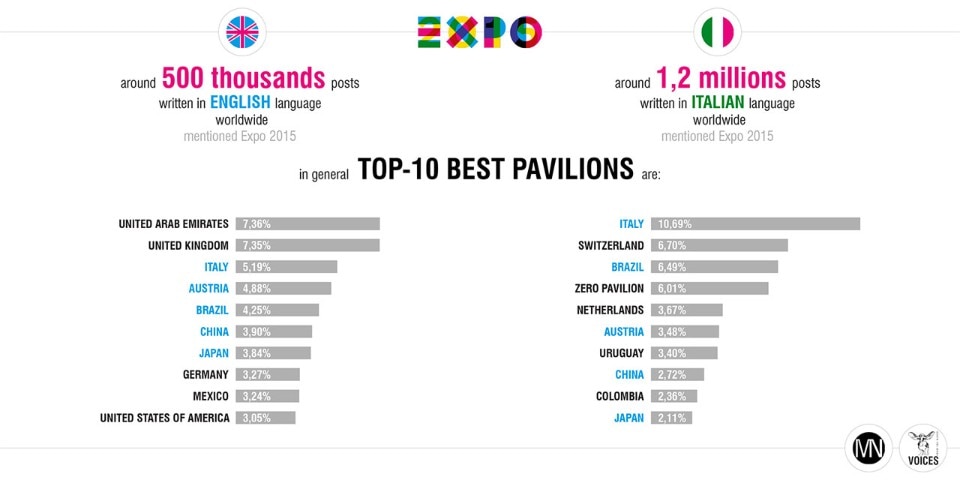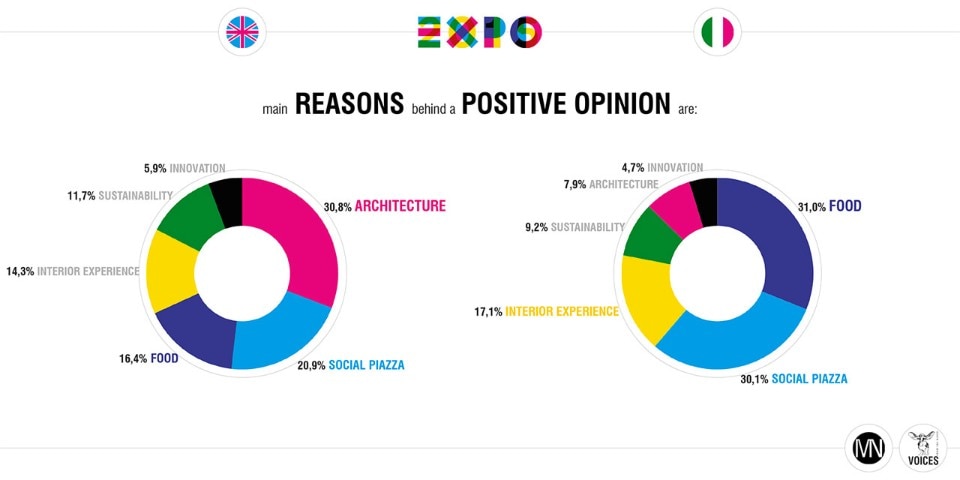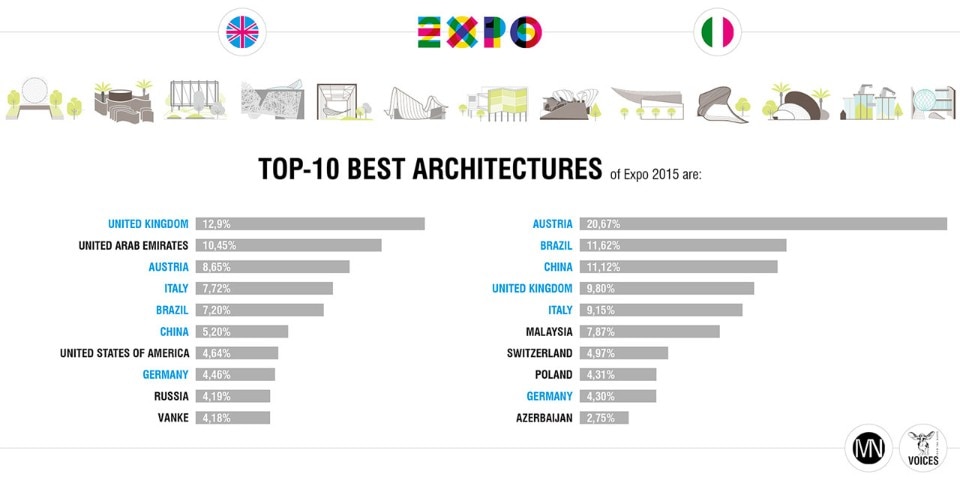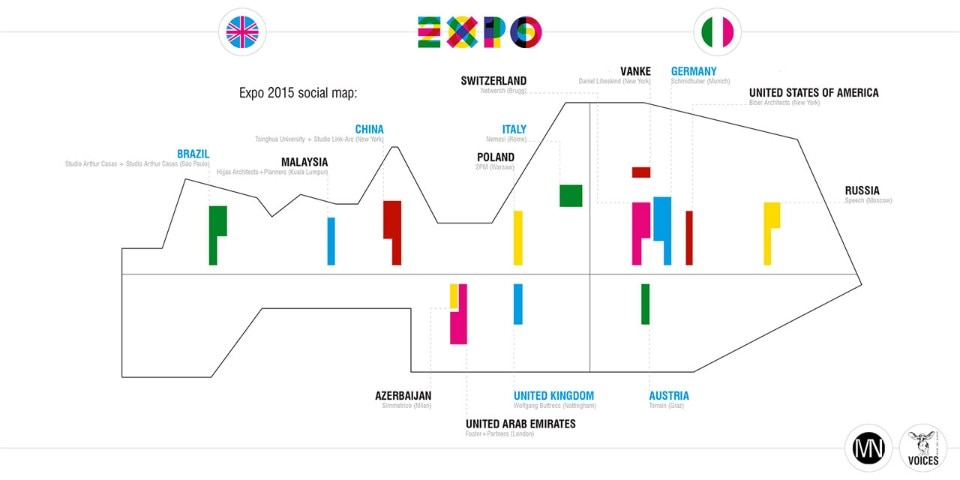
In an attempt to cast light on the matter, we analysed the nearly 1.7 million posts written about the Expo in Italian and English over the past 60 days, with the assistance of Voices from the Blogs, a spin-off of Milan University and a leader in Big Data analytics. This substantial amount of data well reflects the event’s current popularity but also provides a new and interesting key to the impressions of those who visit a Pavilion (perhaps virtually but more often in real life) and immediately afterwards start tweeting about their firsthand experience, or posting on Instagram or other social media. A virtual real-time monitoring of Expo social genics which, among other things, highlights fascinating differences between local visitors (who write mostly in Italian) and international ones.




